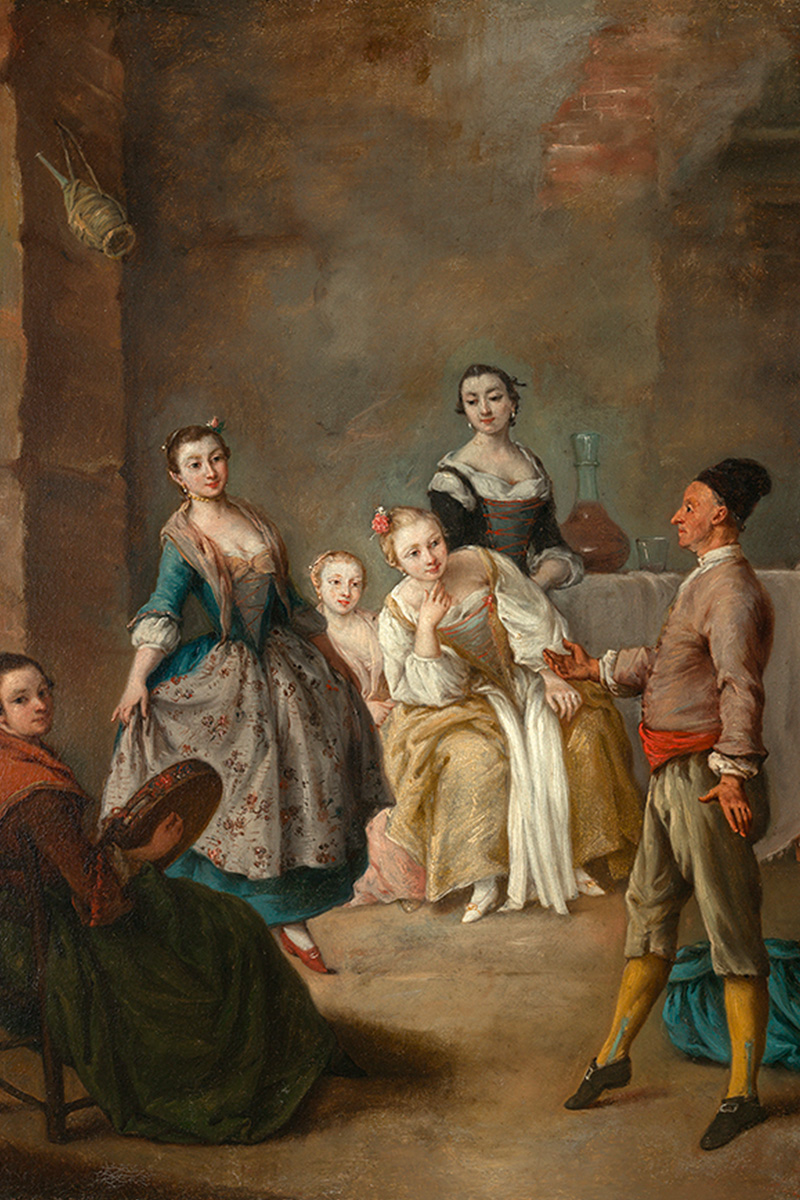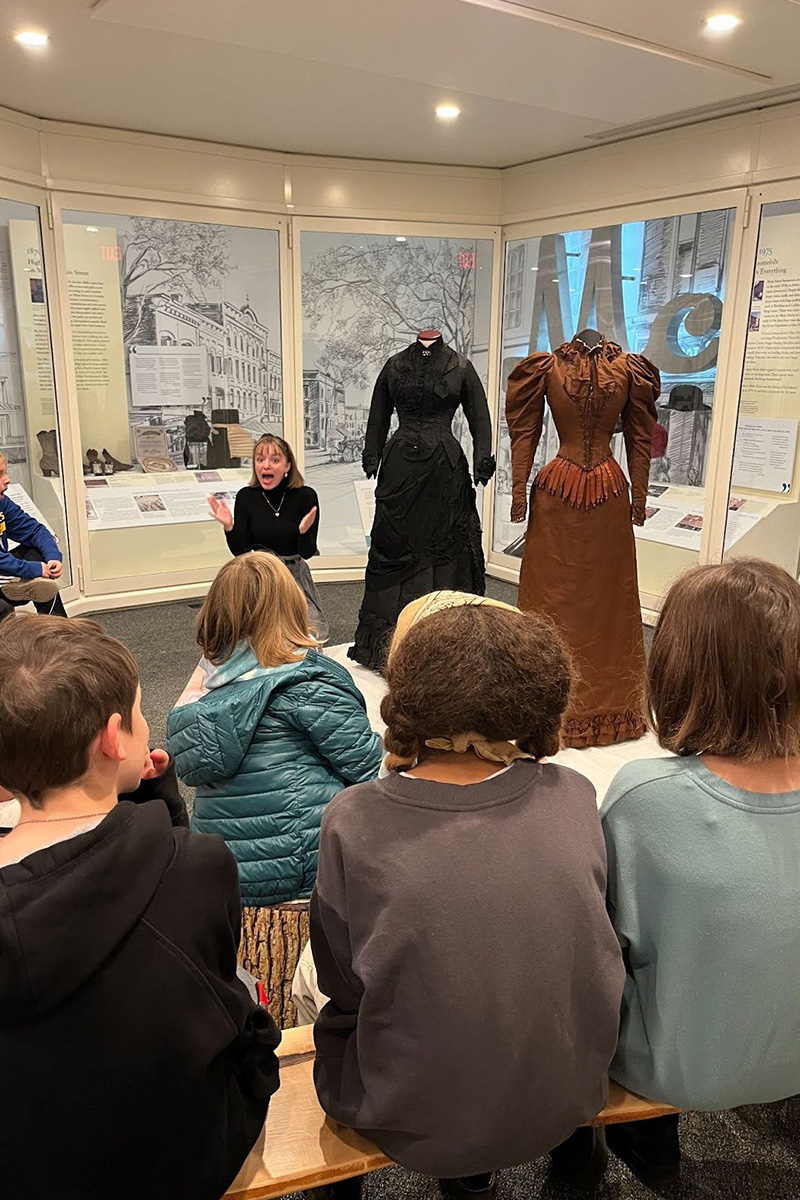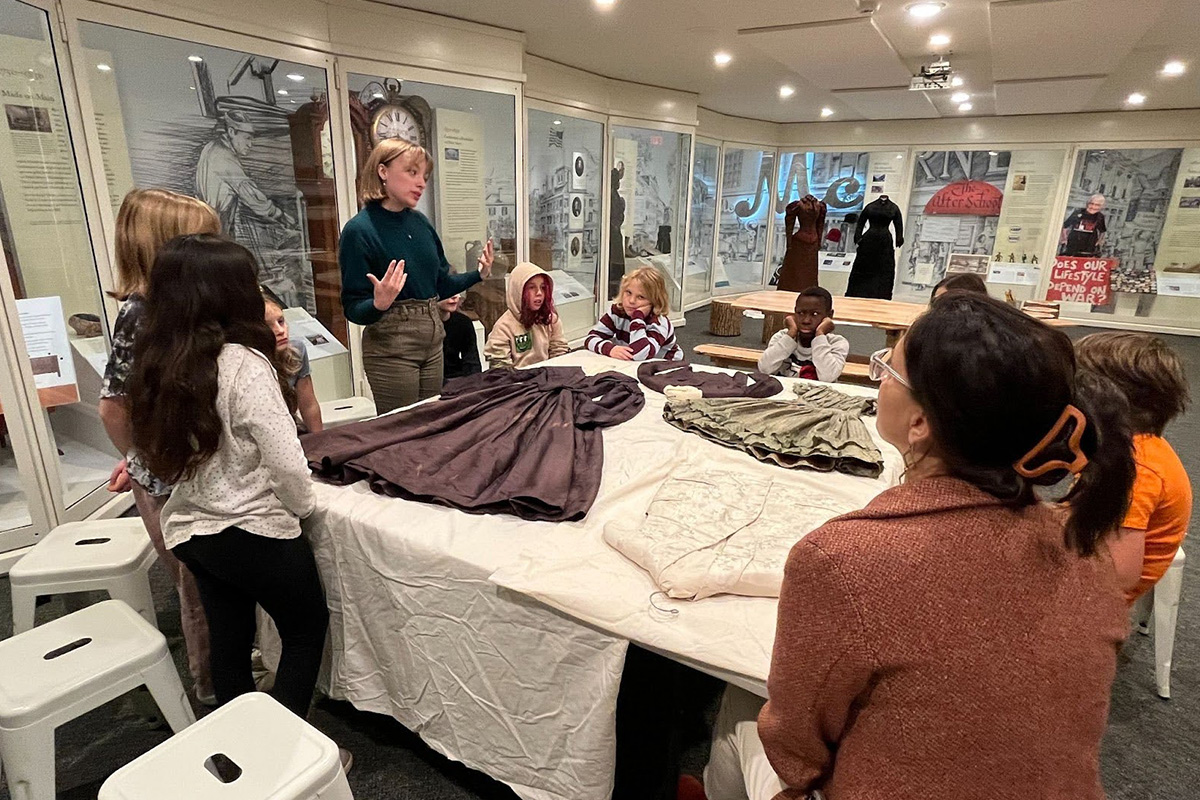
Silken Threads: A Journey Through Local History with a Student Museum Educator
Elizabeth Sacktor ‘24 is a History Major and Studio Art Minor with a Museum Concentration. She has worked since the fall of 2022 as a Student Museum Educator (SME) at SCMA. During the summer of 2023, she worked in the costume and textile collection at Historic Northampton, cataloging the collection and pursuing an independent research project.
As part of a new curriculum focused on local histories of silk in Northampton and Florence, fifth graders from the Campus School of Smith College took field trips to the Smith College Museum of Art (SCMA) and Historic Northampton to see examples of silk in art and historical garments. In collaboration with Campus School teachers Paul Matylas and Lisa Echevarria, SCMA's Educator for School and Family Programs Gina Hall, and I developed an original program that utilized the resources of multiple collections to engage students with local history. We split the program into two visits, one to the second-floor galleries of Art before 1800 at SCMA, looking at examples of silk in paintings from the 17th-19th centuries. The next was at Historic Northampton, studying extant silk garments from the mid to late 19th century.
At SCMA, the students gathered around Erasmus Quinellius II’s 1609 painting, Adoration of Shepherds, to discuss techniques for identifying different materials in painting. The piece depicts the moment the shepherds are summoned by the angels to meet Jesus Christ. Light shining from above highlights Mary, Christ, a shepherdess, and her own child, all dressed in shining silks. The students observed that these central figures' clothing is far more luxurious than that of the surrounding figures, who wear furs, leathers, wools, and other heavier, more drab textiles. The students used words like “shiny” and “delicate” to describe the blue and gold silk elegantly draped on the woman on the left in the foreground. They discussed the way the artist used light and brushstrokes to draw our eyes to the central figures of this scene. When I asked the students, “Why might these central figures be dressed in silk? What does the artist want us to know about them?”, they responded quickly. “Maybe the painting is celebrating the birth of a new baby? So the artist wants us to celebrate!” said one. Another chimed in, “Maybe the silk helps to reflect the light coming in from the clouds. Could the clouds be heaven?”

La Furlana by Petro Longhi, c. 1750
After more discussion, the students searched the gallery for other images of silk in paintings. They found such examples in Pietro Longhi’s La Furlana from 1750, and students quickly began assembling a story from the image’s use of silk. “See, the lady there in the middle is wearing silk cause it’s shiny and she wants to look nice for the man there!” Another student suggested she was dressed up to dance rather than to impress a suitor. “Maybe the one in the front is her sister, and she helped make the dress!” was another theory proposed. Together, the students put forward many possible explanations for why the central figure might be dressed in her finest silk, while actively listening and building off of each other's thoughts.
They practiced similar skills at Historic Northampton, where they examined seven garments made from silk either produced or worn locally during the 19th century. First, they examined two mounted dresses, a black silk dress made by Lucy J. Loud of 33 South Street, Northampton, and a brown silk wedding dress also made and worn in Northampton by Mabelle Forrister Stearns Gare. When asked which of the two they thought was the wedding dress, they puzzled for a few minutes before offering various theories. One thought it must be the black dress because black was a formal color and should be used for formal occasions such as getting married. Another noticed the sparkly beading on the brown dress and used that detail to justify her thinking this was the wedding dress. All the students could identify the dresses’ silk material and recognized the importance of such a fiber in notable life milestones, such as marriage.

Sacktor leading a close looking activity for two late 19th century gowns at Historic Northampton
We moved on to a table with five garments on it: a white moire silk wedding vest, a black silk tailcoat, a green checked silk children’s dress, and a dress made of locally grown silk. The students compared the expensive foreign imported moire (also known as watered silk) with the locally grown silk dress. Some students drew on the vocabulary they learned at SCMA to discuss the drape and shine of the various silks at Historic Northampton. “I can tell that one there is fancy because of the design with the flowers on top,” said one, pointing out the damask weave present in the white moire silk wedding vest. Using both examples of silk, we discussed the range in quality available to the average 19th-century silk consumer of Western Massachusetts and why someone might have silk imported from England or France rather than buying locally processed silk. We finished the visit with a drawing activity, where students were asked to choose a garment and practice their close-looking skills.

Sacktor, Echevarria, and class examining 19th-century silk clothing made in Northampton
Personally, I am so grateful to have gotten the opportunity to develop these parallel programs at two institutions I admire and where I’ve worked. I also used my knowledge of dress history and material culture to combine art and history in a new way for an educational audience. The students seem to have gotten a lot out of the pair of experiences too. One of the students who visited Historic Northampton first before visiting SCMA shared that getting to examine the garments up close and imagine what it might have been like to wear one helped her understand the way the figures in the paintings were posed, saying, “I could imagine myself standing there in all that fancy silk like I was in the painting!” The entire experience reminded me of the importance of interdisciplinary approaches to learning and study. Getting to engage with a material in many different ways: examining physical evidence, drawing what you see, and noticing how others do the same, creates such a fruitful environment for new observations and connections amongst all ages. Hopefully, this program will be continued in coming years with new students and will inspire more opportunities for collaboration among cultural institutions in our community!